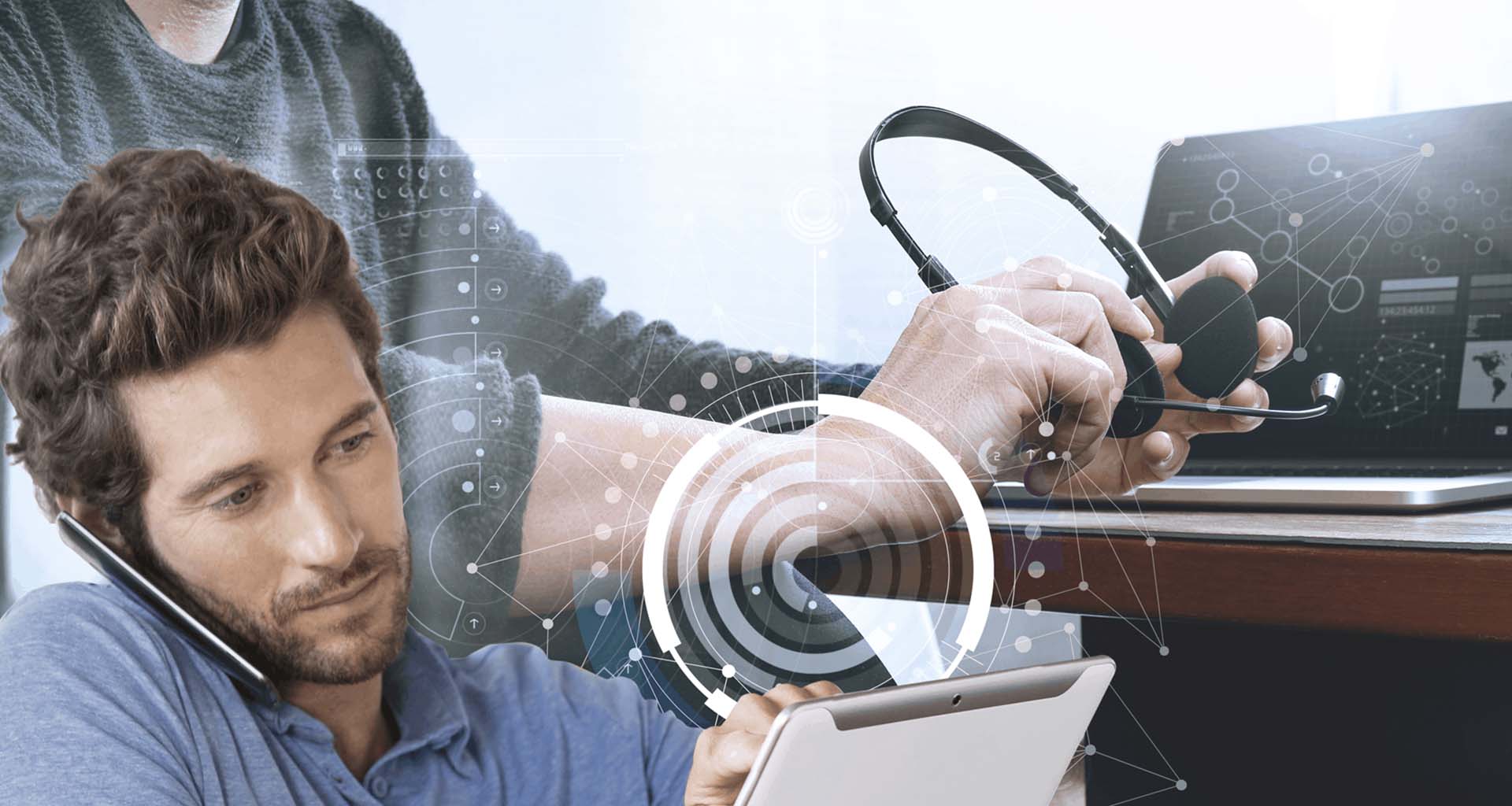Contents
We are living in the experience economy. Success is no longer simply about the goods or services a company provides; rather, it’s about how those products provide a positive, engaging experience. Companies have taken note. In fact, according to Gartner research, almost 90% of organizations now employ a Chief Experience Officer or equivalent. Companies that deliver smooth, low-effort experiences that grab their customers’ attention will be the ones to thrive. However, enhancing the customer journey requires an equal focus on another dimension of customer service: the employee journey.
Omnichannel vs Multiexperience
For years, companies have focused on improving CX by offering customers a seamless omnichannel or multichannel experience that provides consistency across multiple touchpoints and channels. Multiexperience, on the other hand, is about developing effortless, multi-sensory customer experiences across a range of voice, video and text modalities, apps, and other digital touchpoints, regardless of the channel. Omnichannel is also limited in its focus, considering only the relationship between the company and the customer, without factoring in employee experience.
Multiexperience (MX) is an emerging approach that focuses on integrating the employee journey with the customer journey, creating an effortless experience for both. Organizations that focus on MX recognize the clear correlation between employee experience and customer experience. When employees are not fully engaged or do not feel empowered, their lack of motivation can negatively influence CX. Therefore, organizations should apply multiexperience thinking to enhance their employees’ engagement and productivity. The more information, tools and technologies available to the employee – and the more effortless it is for them to access and use them – the easier it is to provide standout customer service.
How can MX create effortless experience for employees and customers?
Empower independence
Avoid treating employees like robots, and benefit from their brainpower. With MX, companies recognize that employees have a wealth of customer service knowledge and will benefit from greater independence in managing each customer interaction to the best of their ability. Less emphasis is placed on efficiency metrics such as AHT. Instead, employees are encouraged to deliver quality interactions that reduce customer effort. Zappos is renowned for its dedication to customer service excellence, with employees encouraged to remain on the line for as long as necessary to please their customers. Employees can also be given more autonomy with the freedom to choose the technology that will best help their customer. For example, an employee may prefer to use voice commands to typing or opt to help a customer using remote support technology.
Encourage devotion to emotion
Monitoring customers’ emotions is becoming more critical to improving both CX and EX. By paying attention to a customer’s verbal and non-verbal communications, it is easier to understand their mood or attitude. With MX, companies encourage their employees to use psychological and behavioral practices to manage customer interactions. An empathetic employee will help the customer feel better about the interaction, even if it isn’t entirely effortless.
For example, a customer needs help with his TV remote control and feels frustrated by his lack of technical skills. An employee can use real-time voice stress analytics, as well as their own intuition, to assess the customer’s emotions and inject a human element into the conversation, effectively removing the friction. Instead of reading through a list of configurations, the employee can explain that everyone finds this task difficult and use a form of remote guidance such as visual assistance to show him what to do.
Predict the future
Giving employees a crystal ball in the form of advanced analytics will empower them to stretch themselves beyond the standard metrics of AHT and FCR to deliver more meaningful customer experiences. With MX principles in place, employees can utilize these tools to help them predict likely customer issues. Employees can then be proactive about preempting those difficulties a practice known as Next Issue Avoidance (NIA).
For example, if a utility company’s data shows that a customer’s bill is significantly higher than normal, proactive steps can be taken to positively engage them, such as checking the accuracy of their meter, offering a new payment plan, or providing tips on lowering future bills. If a customer contacts the utility supplier about an outage, the employee can take the proactive step of mentioning that a lower payment plan is available. By taking a proactive approach to addressing the next step in the customer’s journey, companies avoid the need for customers and employees to handle a “followup issue.” With 40% of all calls considered “next issues” following an initial call, NIA is a critical MX strategy as it enables employees to significantly reduce customer effort, while also reducing their own effort, by eliminating unnecessary incoming calls.
Improve self-service offerings
Self-service represents a massive win for both customers and employees, but it must be done right. With an MX approach, customers have the choice of accessing self-service options via the company’s website, mobile app, social app, IVR system, or voice-activated assistant. All of these touchpoints should enable the customer to resolve their issue as easily as possible, using their preferred method of interaction. Of course, self-service removes the need for customers to contact the company for help, alleviating the pressure on employees by reducing call volume through call deflection.
Domino’s Pizza has invested in innovative MX technologies to fulfill its mission of becoming the best pizza delivery company in the world. They offer 24 different ways for customers to order their food: via their website or mobile apps by texting with a chatbot named Dom, over third-party apps like Facebook Messenger and Slack, and using voice over a smart speaker or smart TV, among others. Once ordered, Domino’s customers have access to a pizza tracker, and very soon they can expect their meals to be delivered by drone.
Accurately measure the impact
As with any organizational strategy, investing in MX must positively impact the bottom line as well as the customer and employee journey. Companies can measure the impact of MX initiatives in the following ways:
For the Customer
Customer Effort Score (CES) is a CX metric that measures how much effort a customer must exert during an interaction with a company. It is most often measured by asking a customer to rate a statement such as: The company made it easy to solve my problem, with “strongly agree” warranting a score of 7. A high CES is closely linked to Customer Satisfaction (CSAT) with Gartner research showing that top-performing low-effort companies tend to have an NPS that is 65 points higher than high-effort businesses. Because low customer effort is now seen as the strongest driver of loyalty, CES can be analyzed alongside retention rates, enabling companies to measure ROI.
For the Employee
Employee Effort Score (EES) is an emerging KPI that measures how much effort an employee must exert to deliver the desired customer experience. It can be measured by asking an employee how easy it was to do their work efficiently and autonomously. Feedback can then be incorporated into new or improved processes. A good EES is closely linked with Employee Satisfaction (ESAT). Companies that make it effortless for employees to engage with their customers have workers who are more satisfied with their jobs and more invested in going the extra mile to help customers find solutions. The ROI of a positive EES can be measured in terms of higher productivity and a lower attrition rate.
Summary
While omnichannel was all about the customer journey, the new MX approach links the customer journey and employee journey by recognizing the direct relationship between employee effort and customer effort. MX offers forward-thinking companies multiple opportunities to bring employees and customers together: by enabling independence, encouraging employees to focus on customer emotions, helping employees become proactive, and improving self-service offerings. Implementing MX will require companies to consider people, processes, and technologies to address any gaps in their journeys with happier customers and employees.






